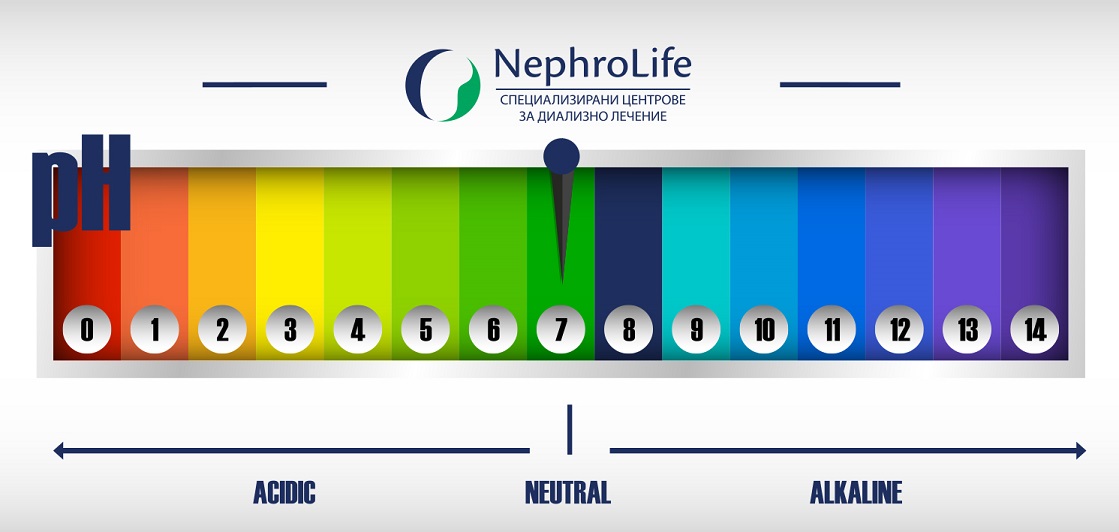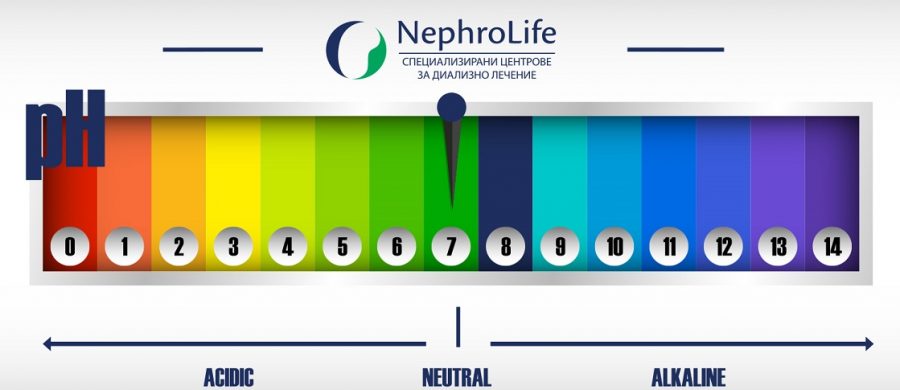Human body is composed mainly of water, with the help of which oxygen, nutrients and biochemicals are transferred from one place to another. The environment in our body can be alkaline or acidic, which is measured through a decimal scale called pH. When the Ph ratio is from 1.0 to 6.9 is determined as acidic, when 7.0 is neutral and at values from 7.1 to 14 it is alkaline.
As water occupies about 60% of the total weight of the human body, pH levels affect all functions of the body and is often a factor determining overall health condition. An unbalanced pH level is an indicator of too acidic or too alkaline environment for a long period of time. This is a factor in the development of certain degenerative diseases, diabetes, cardiovascular disease, cancer and overweight.
Because of the fact that kidneys maintain the levels of electrolytes in our body – those of calcium, magnesium, potassium and sodium, lowering or raising the pH can lead to crystallization of salts in the urine, which results in formation of stones or grit in the bladder and the kidneys.
The food we eat is also alkaline or acidic. According to health experts, acidic foods, those with a lower pH, can make us sick, while alkaline foods, with a higher pH, have a beneficial effect on the body.
For example, fresh fruits and vegetables are alkaline and their consumption prevents the formation of plaque on blood vessels, stops the accumulation of calcium in the urine and the formation of kidney stones.
In general, a diet high in vegetables and fruits, complete with calcium, potassium, magnesium, zinc and other alkalizing minerals, can help to achieve a balanced pH of the body.
Limiting the consumption of acidic foods can help maintain bone density, prevent the formation of kidney stones and even reduce the symptoms of acid reflux. Some acidic foods include refined sugar, hydrogenated fats, dairy products, animal fats, alcohol, coffee, meat, bread and antibiotics.
Through a pH scale it is easy to determine whether the food we consume is acidic or alkaline. By this way, low-pH foods could be easily eliminated from our menu instated of the consumption of healthier alkaline foods, in order to balance the pH levels and follow a healthy diet and habits.









